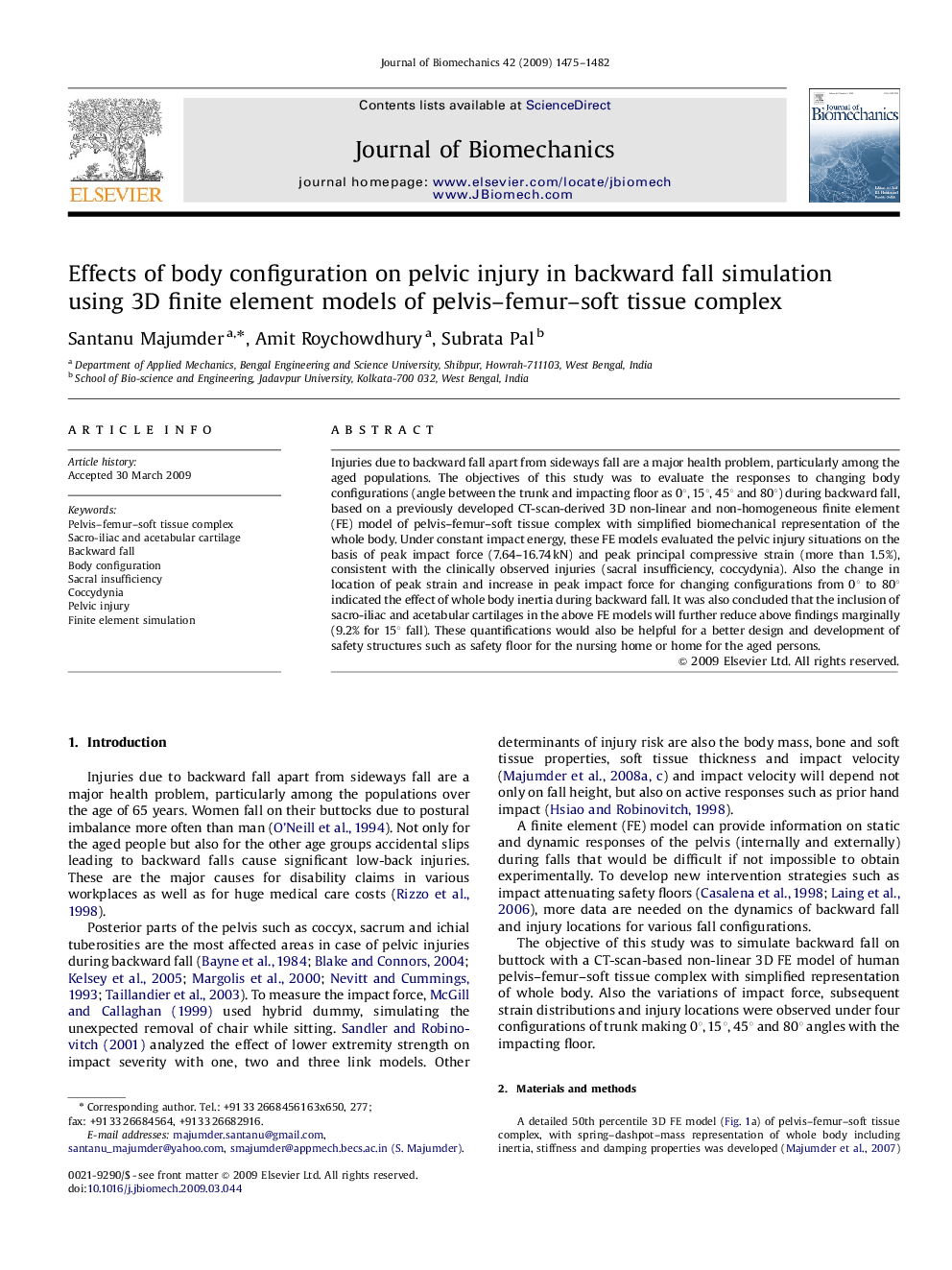| Article ID | Journal | Published Year | Pages | File Type |
|---|---|---|---|---|
| 872850 | Journal of Biomechanics | 2009 | 8 Pages |
Injuries due to backward fall apart from sideways fall are a major health problem, particularly among the aged populations. The objectives of this study was to evaluate the responses to changing body configurations (angle between the trunk and impacting floor as 0°, 15°, 45° and 80°) during backward fall, based on a previously developed CT-scan-derived 3D non-linear and non-homogeneous finite element (FE) model of pelvis–femur–soft tissue complex with simplified biomechanical representation of the whole body. Under constant impact energy, these FE models evaluated the pelvic injury situations on the basis of peak impact force (7.64–16.74 kN) and peak principal compressive strain (more than 1.5%), consistent with the clinically observed injuries (sacral insufficiency, coccydynia). Also the change in location of peak strain and increase in peak impact force for changing configurations from 0° to 80° indicated the effect of whole body inertia during backward fall. It was also concluded that the inclusion of sacro-iliac and acetabular cartilages in the above FE models will further reduce above findings marginally (9.2% for 15° fall). These quantifications would also be helpful for a better design and development of safety structures such as safety floor for the nursing home or home for the aged persons.
